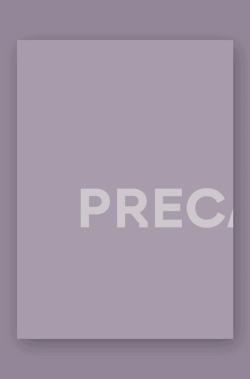Entrevista con Tony Fretton
May 30, 2008
Entrevista realizada por Irénée Scalbert
Londres, 1 de agosto de 2001 - Irénée Scalbert: Usted ha vivido en Londres mucho tiempo. ¿Puede contarme algo sobre su procedencia?
Tony Fretton: Nací al Este de Londres. Mi padre era electricista… Él y sus siete hermanos crecieron en Hackney. Su padre era soplador de vidrio industrial. Mi madre también se crió en Hackney. Tuvo cuatro hermanas. Su padre se dedicó a horadar túneles.
Trabajó en la construcción del Metro de Londres y en otros túneles en Estados Unidos, en Méjico y también en el lejano Oriente. Mientras que la generación de mis abuelos trabajó en empleos manuales, la de mis padres lo hizo en trabajos relacionados con la construcción. Aunque mis padres eran de clase obrera, tenían gustos sofisticados y estaban familiarizados con otras culturas. Eran muy activos, individualistas y hasta, a veces, un poco asilvestrados. Íbamos de vacaciones al extranjero, algo poco habitual para la clase trabajadora.
- ¿Dónde iban ustedes?
Al sur de Francia, Italia, Suiza, Alemania… Siempre íbamos en coche, pasando por lugares como Bélgica, Liechtenstein y los Alpes. Hablo de esto por una razón. La gente que ve la casa que acabo de terminar en Chelsea, dice que no parece una casa inglesa, sino más bien una casa de un país extranjero.
- ¿Como si se tratara de un lugar de veraneo plantado en medio de un contexto local?
Sí, completamente de acuerdo. Quiero cambiar Londres y convertirla en una ciudad exótica.
- ¿Cuántos años tenía usted cuando dejó de vivir en el Este de Londres?
Dos, creo. Nos trasladamos a vivir más hacia el Este, en un barrio de Essex, como mucha gente más de la generación y de la misma clase social que mis padres. Vivíamos muy cerca de donde creció Robin Evans, el crítico de arquitectura. Fuimos vecinos un tiempo, aunque cuando nos conocimos fue más tarde. En un momento dado, mis padres tuvieron la
oportunidad de comprarse una casa y nos trasladamos al Oeste de Londres, a Uxbridge, cerca del aeropuerto de Heathrow, donde pasé mi adolescencia. En la escuela había muchos chicos duros. Yo era distinto. Me interesaba el arte. Mi aspecto era diferente y aprendí a desenvolverme en ese ambiente.
- Usted lee mucho. ¿Dónde conseguía los libros en su juventud?
En la biblioteca local. Paso mucho tiempo en la biblioteca.
- ¿Así que usted era un intelectual?
No. No estoy hecho de esa pasta. Yo siempre hago las cosas primero y luego reflexiono sobre ellas. Adopté, desde el principio, una postura un poco bohemia ante la enseñanza, aunque admiro la buena formación académica de otras personas.
- ¡El suelo de su apartamento está lleno de libros!
Los compro compulsivamente. Los ojeo para descubrir lo que me pueden decir sobre mi obra. Algunas veces los leo, si los encuentro vitales para mí.
- ¿En que medida la cultura influye en su obra?
Hay muchos arquitectos que tienen libros en el tablero de dibujo. Yo hago cosas, así es como trabajo. Soy una persona “que hace” y después, observo “lo que he hecho”. Usted ha trabajado en la construcción.
- ¿Cuántos años tenía?
Tenía dieciocho. Trabajé en la construcción tres años, entre el instituto y mis estudios en la Architectural Association. Construí edificios; excavé zapatas a mano; mezclé hormigón; trabajé con tabiques de ladrillo y andamios.
- ¿Tuvo esto algún efecto sobre sus estudios de arquitectura?
No. Me gustaban los materiales de construcción, la forma de las excavaciones en el terreno, más que el edificio terminado. En realidad, estaba más interesado en el arte. Desde muy temprana edad, digamos trece años, estaba seguro de que sería pintor.
- ¿Cómo llegó a la arquitectura?
Cuando tenía diecinueve, leí un artículo en un periódico sobre un nuevo plan para una ciudad de provincias y me interesó mucho la idea de que la arquitectura pudiera ser un arte social. Me pareció fascinante.
- Usted ingresó en la Architectural Association a mediados de los sesenta ¿Cómo lo consiguió?
Había oído decir que era buena y por eso solicité el ingreso. La escuela entendió claramente que yo era diferente y me aceptó. Allí había muchos estudiantes, que provenían de otras escuelas, donde su preparación iba enfocada a estudios de humanidades. Yo estaba desconcertado. Mi primer día en la AA, me pareció que no pasaba nada y me sentí profundamente incómodo porque yo era un trabajador.
- ¿Qué clase de educación recibió?
No conecté fácilmente con la enseñanza. Se esperaba de ti que hicieras tu propia arquitectura y te daban pocas instrucciones sobre cómo podías realizarla. Había excepciones, como por ejemplo James Gowan. Él sí que sabía de lo que hablaba. También sabía de construcción. Para él, hacer cosas, podía ser también un vehículo para el pensamiento. Para confirmar lo que digo, tenemos su obra, por ejemplo el edificio de Ingeniería de Leicester, que construyó con James Stirling, y la casa Schreiber, un proyecto grandioso, que me pareció inmensamente sencillo y casi feo, una fealdad que para mí se convirtió en fuente de inspiración.
- ¿Puede describir cómo trabaja?
Lo primero que hago es reservarme un tiempo para ser yo mismo en el propio lugar donde me han realizado un encargo. Simplemente, miro las cosas. Soy muy buen observador.
- ¿Qué clase de cosas?
Características del cliente, el programa, el lugar y sus alrededores. Es como estudiar la naturaleza. Usted o yo vamos al campo y no podemos distinguir una brizna de hierba de otra, pero alguien que conozca realmente al campo, desarrolla un cierto sentido para distinguir lo que sus objetos significan. Sabe cómo surgieron.
- En su obra se detecta una preocupación muy fuerte por cómo la arquitectura está enraizada en un entorno concreto, que no es arquitectónico, en el sentido que entiende la mayoría de la gente. Al principio de los noventa, tanto yo como otras personas, nos quedamos perplejos cuando usted hizo aquellas fotografías de Londres. ¿Cómo las hizo y cuál fue el motivo de aquellas fotos?
Esas fotos surgieron de un grupo de gente de la AA, en el que se encontraba Matthias Sauerbruck, que decidió montar una exposición. El lugar fue Earl’s Court, en el oeste de Londres. Fui a dar un paseo; hice un poco de psicogeografía; vi lo que me interesaba y lo fotografié. Deseché la mayoría de las fotos y volví a rehacer algunas de ellas.
Reflexionando sobre la manera en que había fotografiado lo que había visto, encontré un sentido a esa mirada. Estas fotografías son muy sorprendentes y reflejan el Londres arquetípico, aunque a uno nunca se le hubiera ocurrido hacerlas.
Todos esos son lugares por los que me he movido y los conozco profundamente. Sé cómo surgieron, lo que significan, qué tipo de gente vive allí. Sé apreciar sus matices.
- Usted se da cuenta de cosas en circunstancias anónimas, que a la mayoría de la gente le pasarían desapercibidas. Esto es impresionante.
Nada es anónimo, o casi nada carece de significado. El anonimato es sólo una condición concreta que debemos colocar en nuestras mentes para que vivir en la ciudad sea más tolerable. Me parece que en el debate actual sobre lo anónimo, sobre lo cotidiano, la banalidad interfiere visiones más sutiles.
- Pero está claro que a usted le interesan estas convenciones. Es decir, cómo las ideas y las cosas son absorbidas por la cultura. ¿De qué manera esta preocupación está presente en su obra?
Mi obra reciente trata menos sobre las ideas como tales. Las ideas pueden ser muy potentes. Te descubren cosas. Luego, pierden interés y te dedicas a otra cosa. Eso es lo que ocurre cuando uno hace cosas. Las ideas son la técnica para hacer algo. Producir objetos es una habilidad muy especial y la manera en que se consigue esto, casi nunca es explícita. La mayoría de los objetos de este mundo no tienen un punto de partida lógico. Están en otro mundo, en una especie de estado animal.
- Esto me recuerda a Alison y a Peter Smithson
Cuando Peter habla, bien sea sobre Lewerentz o sobre su obra, lo que dice procede de la misma parte de la mente con la que produce sus edificios. Eso es lo grandioso y exige una inteligencia especial, que tiene una base física y que es compartida tanto por artistas, como por atletas y animales.
- ¿Cómo trabaja usted en la práctica?
Trabajo muy rápido. Para la casa de Chelsea, visité el lugar y tuve dos o tres ideas iniciales. Cuando el diseño no estaba todavía formalizado, me reuní con el cliente en el bar del Instituto de Artes Contemporáneas. Le dibujé un croquis en mi cuaderno y le dije: ¡así será, así lo construiremos!
- ¿No se lo piensa antes?
Me lo pienso muy detenidamente. He reflexionado sobre casas como ésta durante años. He estado estudiando, por ejemplo, el Palacio Ducal de Urbino.
- Me sorprende la elección de su ejemplo. De todos los grandes edificios del Renacimiento italiano, el Palacio de Urbino es probablemente el único cuya autoría no está clara. A pesar de eso, es inmensamente exquisito.
Tenía tanta belleza… pero yo no entendía cómo se había logrado. Haber eliminado los orígenes y erradicado la evidencia de cómo había llegado a producirse y, al mismo tiempo, convertirse en algo que te transporta. Esto es lo que yo intento hacer.
El exterior de Urbino ha sido bastante modificado. Las ventanas, aunque realizadas maravillosamente, parece que están colocadas de manera aleatoria en la fábrica de ladrillo.
Me parece que esa cualidad de adaptación es muy interesante y está presente en la casa de Chelsea. En ella, he establecido un sistema de ordenación para dar un sentido a la arquitectura. Luego, lo he ajustado, incluso sometiéndolo, para obtener ventajas en términos de comodidad, o para gozar de una panorámica de los alrededores, o una conexión entre habitaciones. Veo que estas cosas pasan en Urbino, en donde el espíritu del lugar se ha impuesto con fuerza contra todo pronóstico.
- ¿Puede dar un ejemplo?
El Palacio de Urbino es un interior refinado rescatado de un castillo. Tal y como lo recuerdo: entras en el patio y luego giras hacia la escalera, situada en la esquina. Subes al primer piso y entras en la sala principal, que es grande y confortable. Detrás, hay toda una serie de estancias privadas, que dan al frontal del edificio, dominando la plaza pública, lo más lejos posible de todo el mundo y con una amplia perspectiva de la campiña. Algunas están muy decoradas, con trampantojos de marquetería. Otras, muy austeras, como la sala del baño. Me gustan esos contrastes. En aquel tiempo, la arquitectura clásica en Italia era muy diferente a los edificios tardoneoclásicos del resto de Europa. Se preocupaban menos por la expresión del orden, del poder, y de la jerarquía. Existe, en Urbino, una cierta ausencia de poder, una tolerancia ante la frustración, por no haber conseguido unos objetivos más ambiciosos, que lo hace bello y vital.
- El tema del control y de la identidad del autor, que en Urbino no está clara, me lleva al terreno de la expresión personal en arquitectura. Los edificios de Mies, por ejemplo, tienen una atmósfera particular, que tiene que ver con el hombre, con su pensamiento por supuesto, pero también con sus sentimientos y con su cuerpo. Se podría decir lo mismo de James Stirling y también es especialmente cierto en su caso.
Eso no se puede evitar y tampoco se debería. Uno sólo puede trabajar con lo que tiene. Como decía James Gowan, los arquitectos trabajan como los novelistas, con esto quiero decir, que nos presentan sus agudas observaciones de una manera atractiva y plausible. Sin embargo, es fundamental comprender que la interpretación personal, por muy inevitable que sea, no es un fin en sí misma. Un edificio está para que las otras personas lo entiendan.
- En otras palabras, la identidad del autor es un medio, no es un fin.
Exactamente. Estoy dispuesto a llegar a donde sea para evitar hacer arquitectura como si hiciera un autorretrato.
- Pero usted se sentiría igual de decepcionado si tuviera que hacer una arquitectura que fuera anónima.
No creo que eso sea posible. Tanto la estética, como el gusto son factores de la condición humana.
- Me refiero a algo más concreto que eso. Hay en sus edificios un sentido muy físico, que tiene algo que ver con usted, con su persona. La fachada de la Galería Lisson, por ejemplo, ofrece una visión inquietante.
Uno no sabe si es grande o pequeña, sólida o frágil. Existe una incertidumbre acerca de sus intenciones; incertidumbre que parece deliberada, aunque no de manera consciente. Parece, como si usted quisiera hacer a uno experimentar algo, que da la impresión de no ser completamente posible.
- ¿En qué otros edificios consigue algo parecido?
Lo veo más claro en la pintura. Las pinturas de Rothko, por ejemplo, son abstractas, no obstante, recuerdan la capacidad de sugerir que tienen las obras de Turner, que oscilan entre el hecho y la sugerencia.
- En su obra, la oscilación se produce, a menudo, en relación con la escala. En la Casa de la Fe, en Holton Lee, las proporciones sugieren una ambigüedad parecida.
Eso es porque explotamos la cuestión de que la granja que tienen al lado es mucho más pequeña de lo que parece. Situamos la Casa de la Fe en una elevación del terreno, de forma que las cubiertas de los dos edificios quedaran alineadas. Sin embargo, el edificio antiguo tiene dos pisos y el nuevo sólo uno. Los detalles de la Casa de la Fe también producen ambigüedad sobre si se trata de un pequeño templo griego, un edificio anexo para una granja, o una pieza de escultura. Todos estos factores se combinan en una imagen, pero no en una imagen firme. Creo que será mágica más que inquietante. Esta incertidumbre tiene el efecto de mantener vivos a los edificios. E incluso, mucha gente los encuentra muy relajantes en su interior.
- Creía que la calma y la inestabilidad eran contradictorias.
Cuando uno camina por los Alpes, a menudo es peligroso y hace frío, sin embargo es profundamente relajante.
- ¿Eso hace que uno esté con los cinco sentidos alerta y a la vez se sienta como en casa?
Se siente a gusto. En nuestros edificios no tienes sensación de inestabilidad en todo momento. Desde el piso superior de la Casa en Chelsea, no ves casi nada que rompa la línea del horizonte. Es como dormir en el campo. De hecho, yo diseño para proporcionar sosiego, satisfacción física y felicidad.
- ¿De qué manera ha cambiado su obra desde que empezó a trabajar?
No creo que la arquitectura tuviese el mismo poder que la música pop o que el arte que se hacía entonces. Al principio, quise rehacer la arquitectura por completo, empleando materiales no arquitectónicos. Quise ir a otros campos completamente distintos para encontrar mis materiales, como por ejemplo al arte conceptual o el arte de performance y eso es lo que hice. Sorprendentemente, parece que eso ha influido en las generaciones siguientes. Pero nunca he pretendido que este enfoque se convirtiera en un método de trabajo.
- ¿Fue simplemente una fase?
Yo no me arrepiento del trabajo que hice en el pasado. Lo hice de forma muy apasionada. Luego lo asumí como una técnica y eso me ha conducido a hacer otra cosa. Yo experimento. En el futuro, voy a hablar menos, voy a producir objetos y ver qué pasa.
Artículo publicado en a+t 18. Tony Fretton.
RELACIONADOS
|

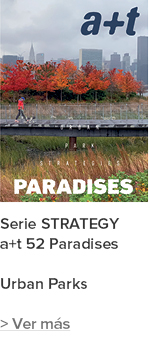
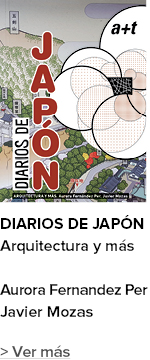





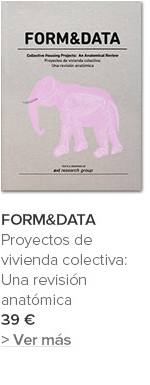
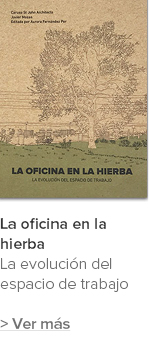

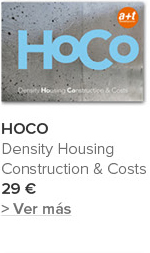


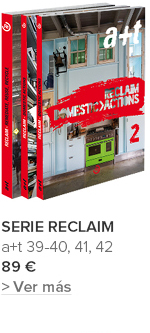
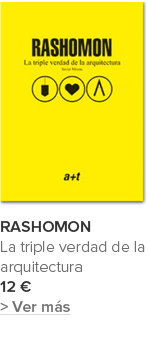






 He leído y acepto las
He leído y acepto las 


